Just In
- 1 hr ago

- 4 hrs ago

- 6 hrs ago

- 8 hrs ago

Don't Miss
- Movies
 Manoj Bajpayee’s Silence 2 Leaked Online In HD For Free Download After Its OTT Release
Manoj Bajpayee’s Silence 2 Leaked Online In HD For Free Download After Its OTT Release - Sports
 Rohit Sharma says MS Dhoni is 'sick and tired' but easy to convince Dinesh Karthik for T20 World Cup 2024
Rohit Sharma says MS Dhoni is 'sick and tired' but easy to convince Dinesh Karthik for T20 World Cup 2024 - Automobiles
 Google Maps To Ease EV Charger Finding With Latest Updates
Google Maps To Ease EV Charger Finding With Latest Updates - Finance
 Elon Musk Seeks Approval For Lucrative Pay Package Amid Legal Scrutiny
Elon Musk Seeks Approval For Lucrative Pay Package Amid Legal Scrutiny - News
 Rahul Gandhi Lacks The Bravery To Run In Amethi Polls, Claims Rajnath Singh
Rahul Gandhi Lacks The Bravery To Run In Amethi Polls, Claims Rajnath Singh - Technology
 OnePlus 11R 5G Solar Red Edition Now Available With New Storage Configuration; Get It for Rs 34,999
OnePlus 11R 5G Solar Red Edition Now Available With New Storage Configuration; Get It for Rs 34,999 - Education
 IIT Madras Introduces International master's course on Water Security and Global Change
IIT Madras Introduces International master's course on Water Security and Global Change - Travel
 From Coconut Breaking on Head to Men Dressing as Women: 12 Unique Indian Rituals Explored
From Coconut Breaking on Head to Men Dressing as Women: 12 Unique Indian Rituals Explored
12 Safe And Effective Tips For Diabetic Foot Care
Diabetics are at an increased risk of foot ulceration and foot pain. High glucose levels in the body cause neuropathic (damage to the nerves) and microvascular (narrowing and stiffening of blood vessels) changes, which makes them prone to wounds and injuries. Also, due to less blood flow in the foot area, the wound healing gets delayed, leading to other complications. [1]

According to a study, around 15-25 per cent of diabetics are at increased risk of foot ulcers, which may lead to foot amputation. [2] Other diabetes complications such as musculoskeletal, vascular, dermatologic and neurological disorders may also increase the risk of lower foot amputations.
The risk of some foot amputations can, however, be prevented by 80 per cent by certain self-care and self-monitoring tips. In this article, we will discuss some safe and effective tips for diabetic foot care. Take a look.


1. Maintain Cleanliness
The foremost foot care tip for diabetics is to ensure the cleanliness of their feet by regular washing and cleaning. This helps reduce the feet susceptibility to infections and keep them healthy. Make sure to wash, rinse and dry the feet, paying special attention between toes.

2. Keep Your Feet Covered
Wounds take a long time to heal for diabetics. Even a small cut or wound may result in gangrene, a skin condition identified by discoloured and black tissue. The condition may sometimes progress to chronic pain, decreased movement, leg surgery and death. Therefore, it is advised to cover your feet most of the times. [3]

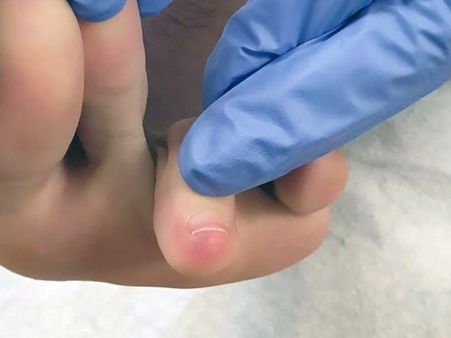
3. Do Close Inspection Regularly
Before going to bed, closely examine the feet and lookout for signs of sores, cuts, blisters, scrapes, swelling or any other foot problems that might aggravate into bigger complications. Consult a medical expert if you notice anything, even if you consider it to be minor.

4. Wear Clean Socks
Walking barefoot, even at home, may increase the risk of foot ulcers. Protect your feet from any sort of damage by wearing socks. Make sure they are clean and dry. Do not wear the same socks and make efforts to change them daily. Wear market-based padded socks specially designed for diabetics. [4]

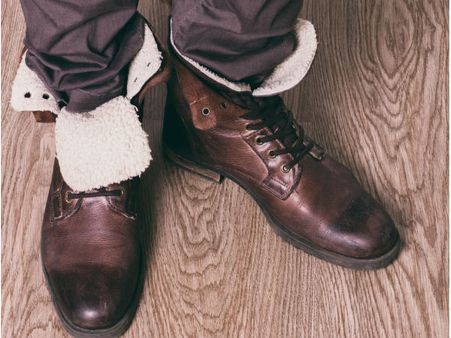
5. Choose Your Shoes Wisely
Choose the right shoe which is comfortable and won't cause calluses or blisters. Wearing tight-fitting shoes may increase the risk of sores and blisters due to improper ventilation. It is advised to keep at least two pair of shoes and change them on alternate days. Also, make sure to remove stones or dirt particles before wearing them.
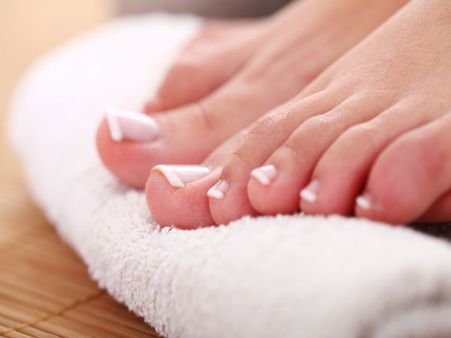
6. Avoid Heating Pads
Applying heating pads on the feet can be effective in reducing pain and swelling, but regular exposure to this heat therapy may induce numbness in the area, preventing us from knowing any kind of injury. Avoid its regular usage and use whenever required.
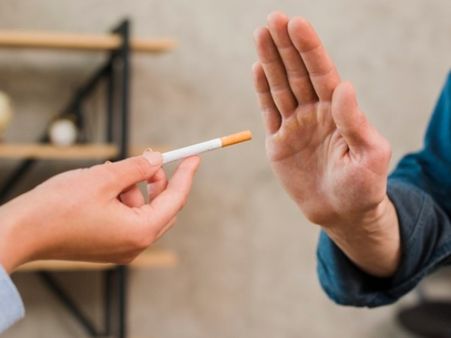
7. Quit Smoking
Smoking aggravates diabetic foot ulceration at all stages, be it the onset or the healing stage. It can worsen the autonomic and motor neuropathy and diabetic peripheral sensory, which are the main causes for the occurrence of foot ulcers. [5]

8. Go For Timely Check-Ups
Diabetes plays a pathogenetic role in heart diseases. According to a study, the prevalence of heart diseases is more in diabetics compared to non-diabetics. [6] Never miss on doctor's appointment and keep a check on your glucose levels daily.

9. Foot Massage
Diabetes can hinder thermal regulation in the feet and cause alteration in the cold and heat perception. Also, high blood glucose can contribute to increased stiffness and reduced tissue elasticity making movement difficult. Foot massage helps stimulate equilibrium and promote relaxation, thus improving the pain and decreasing the risk of foot ulcers. [7]
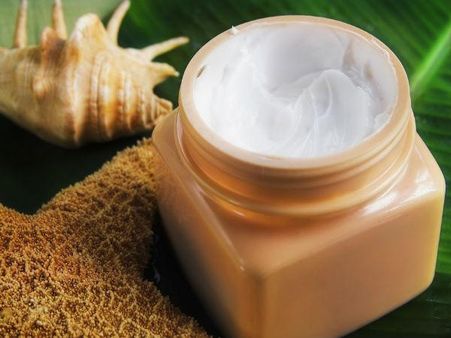
10. Use A Mild Moisturiser
Moisturising the feet is as important as cleaning them. Use moisturisers rich in antioxidants and Vitamin E as they may help reduce the production of free radicals that can cause damage to the skin cells. Also, don't forget to moisturise the feet regularly and apply foot cream every night, if necessary.

11. Groom Your Toenails Carefully
Curling toenails can also be a common cause of foot pain among elders. The best way to prevent this is by cutting them short only when they get too big. While using nail clippers, be extremely careful and use only those designed for toenails, not fingernails, as they are wider and help avoid injury. Also, ensure to file your toenails after clipping them.

12. Go For Light Walks Every Day
The foot muscles require daily exercises to remain functioning for longer periods. Regular walking helps keep the ligaments and tendons flexible and also strengthens the leg muscles. This may help prevent the risk of foot ulcers and other complications.
-
 healthExclusive: World Oral Health Day 2024: Doctor Shares How Diabetic Patients Can Maintain Their Oral Health
healthExclusive: World Oral Health Day 2024: Doctor Shares How Diabetic Patients Can Maintain Their Oral Health -
 healthWhat Is VIP? It Is Not What You Think! This One Is Connected To Blood Glucose, Here's What You Need To Know
healthWhat Is VIP? It Is Not What You Think! This One Is Connected To Blood Glucose, Here's What You Need To Know -
 pregnancy parentingWhat Are The 4 Must Have Vitamins For Kids With Diabetes?
pregnancy parentingWhat Are The 4 Must Have Vitamins For Kids With Diabetes? -
 healthDoes This Everyday Cooking Ingredient Trigger Diabetes?
healthDoes This Everyday Cooking Ingredient Trigger Diabetes? -
 healthRoller Coaster Effect In Diabetes: Why Does My Blood Sugar Level Go Up And Down, How To Stop It
healthRoller Coaster Effect In Diabetes: Why Does My Blood Sugar Level Go Up And Down, How To Stop It -
 healthSinger Shakira Loves These 2 Indian Sweets! How To Make It Diet-Friendly?
healthSinger Shakira Loves These 2 Indian Sweets! How To Make It Diet-Friendly? -
 healthWorld Diabetes Day 2023: 3 Weird Things That Can Put You At Risk Of Developing Diabetes
healthWorld Diabetes Day 2023: 3 Weird Things That Can Put You At Risk Of Developing Diabetes -
 healthWorld Diabetes Day 2023: Daily Habits That Make One At Risk Of Diabetes
healthWorld Diabetes Day 2023: Daily Habits That Make One At Risk Of Diabetes -
 wellnessWorld Diabetes Day 2023: Avoid These Common Mistakes When Testing Blood Sugar Levels
wellnessWorld Diabetes Day 2023: Avoid These Common Mistakes When Testing Blood Sugar Levels -
 healthDiwali 2023: Kalakand Recipe For Diabetic People; It Is Sugar-Free & Keto-Friendly
healthDiwali 2023: Kalakand Recipe For Diabetic People; It Is Sugar-Free & Keto-Friendly -
 healthHow Poor Air Quality During Can Raise Your Diabetes Risk
healthHow Poor Air Quality During Can Raise Your Diabetes Risk -
 healthWhip Up These 3 Diwali Sweets For Your Diabetic Mom Over 40
healthWhip Up These 3 Diwali Sweets For Your Diabetic Mom Over 40


 Click it and Unblock the Notifications
Click it and Unblock the Notifications





